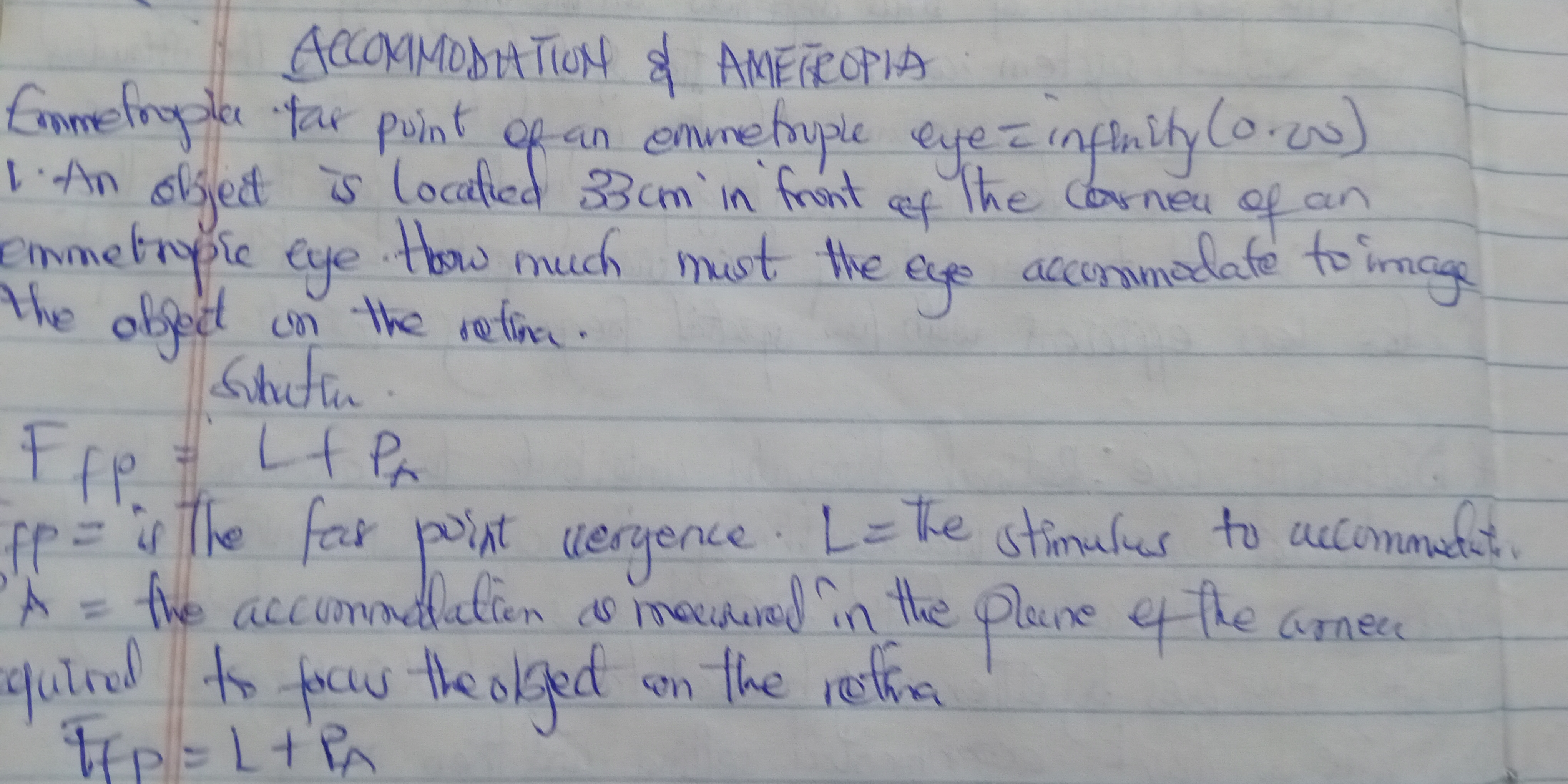An object is located 33cm in front of the cornea of an emmetropic eye. How much must the eye accommodate to image the object on the retina?

Understand the Problem
The question is asking how much an emmetropic eye must accommodate to image an object located 33cm in front of the cornea. This involves using the accommodation formula to calculate the required accommodation.
Answer
$3.03 \text{ D}$
Answer for screen readers
The eye must accommodate 3.03 diopters. $3.03 \text{ D}$
Steps to Solve
- Understand the accommodation formula
The formula given is $F_{fp} = L + P_A$, where:
- $F_{fp}$ is the far point vergence (in diopters). For an emmetropic eye, the far point is at infinity, so $F_{fp} = 0$.
- $L$ is the stimulus to accommodation (in diopters), which is the vergence of the object.
- $P_A$ is the accommodation required (in diopters).
- Calculate the stimulus to accommodation (L)
The object is located 33 cm in front of the eye. To find the stimulus to accommodation $L$, we need to convert this distance to meters and then take the inverse to find the diopters. $$L = \frac{1}{\text{distance in meters}}$$ $$L = \frac{1}{0.33 \text{ m}} \approx 3.03 \text{ D}$$
- Apply the accommodation formula and solve for $P_A$
We know that for an emmetropic eye, $F_{fp} = 0$. So the equation becomes: $$0 = L + P_A$$ $$P_A = -L$$ Substitute the value of $L$ we calculated: $$P_A = -3.03 \text{ D}$$ Since accommodation is a positive value, we take the absolute value: $$ |P_A| = 3.03 \text{ D}$$
The eye must accommodate 3.03 diopters. $3.03 \text{ D}$
More Information
The accommodation required for an emmetropic eye to focus on an object at 33 cm is approximately 3.03 diopters. This demonstrates the eye's ability to adjust its focus for near objects.
Tips
- Forgetting to convert cm to meters: A common mistake is to use the distance in centimeters directly in the vergence formula. The distance must be in meters.
- Incorrectly using the sign: The stimulus to accommodation ($L$) is positive when the object is in front of the eye. The accommodation ($P_A$) is the negative of the stimulus to accommodate when $F_{fp} = 0$
- Assuming $F_{fp}$ is not zero: For emmetropic eyes, the far point vergence is zero.
AI-generated content may contain errors. Please verify critical information